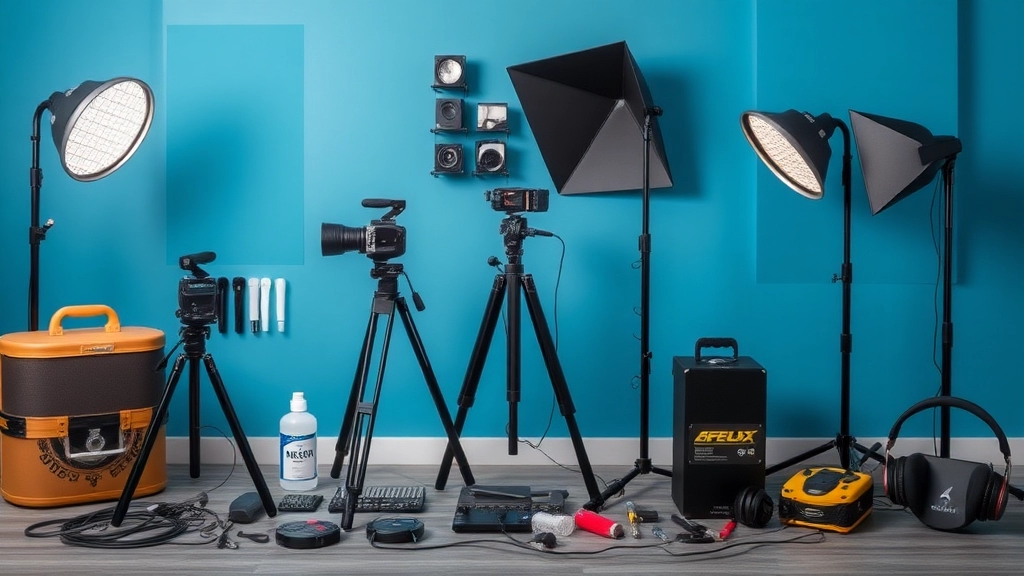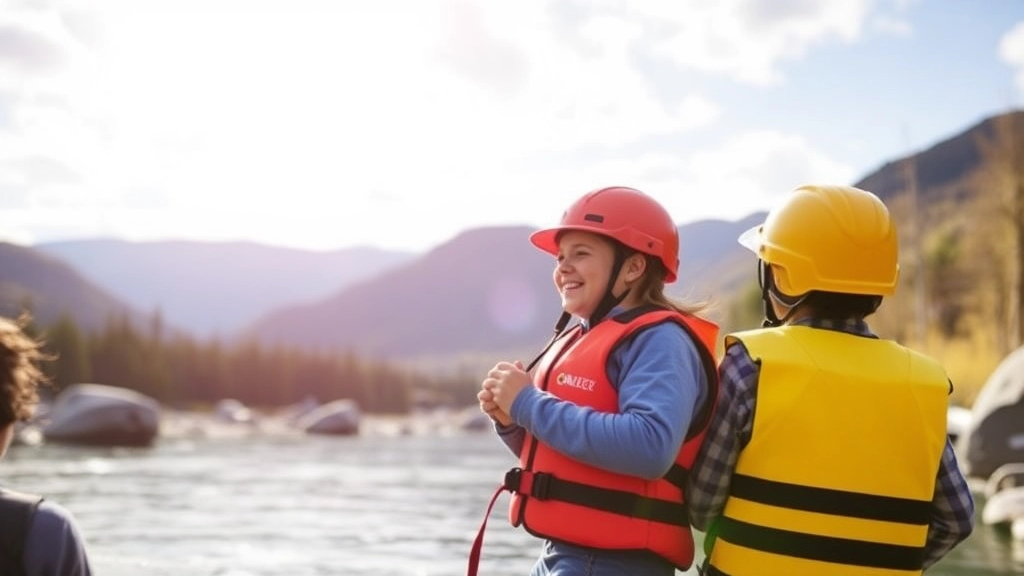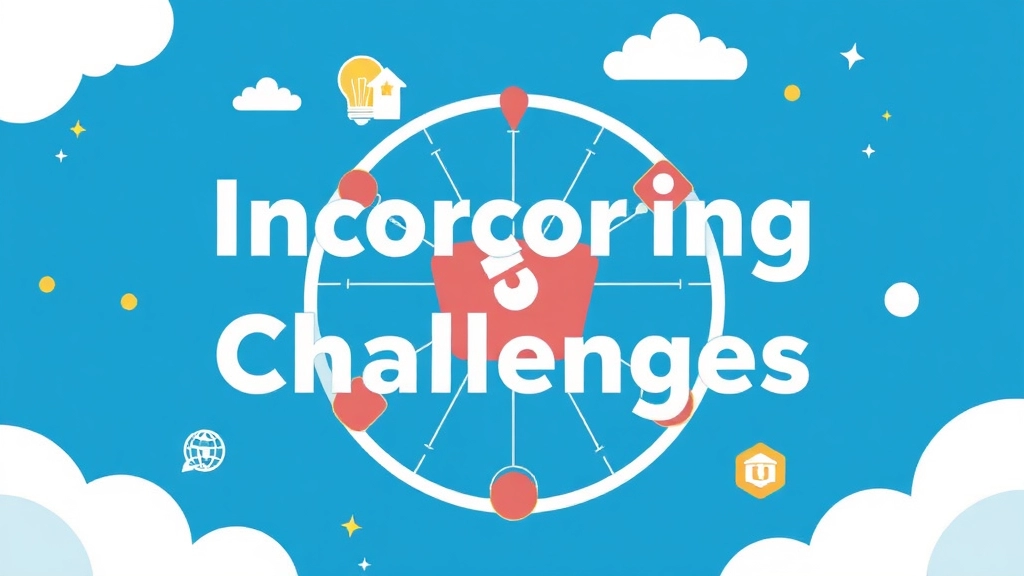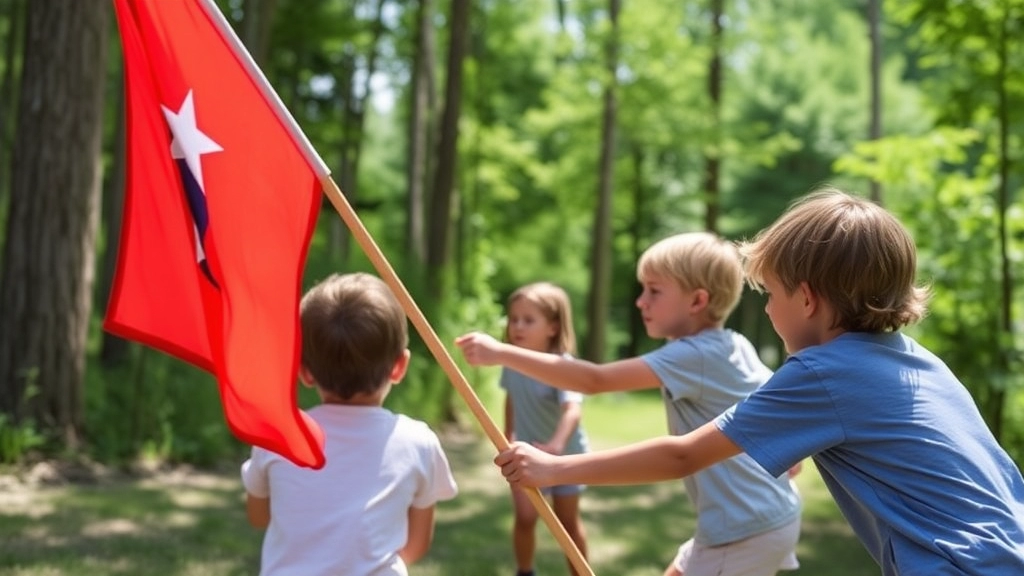Planning a Summer Camp Capture the Flag Game
Planning a summer camp Capture the Flag game can be both thrilling and daunting. This article breaks down everything you need to create an unforgettable experience. From choosing the perfect location and essential equipment to setting up the field and explaining the rules, we cover all the bases. Safety tips ensure everyone has a blast without injuries, while team strategies and tactics give your game a competitive edge. Plus, incorporating themes and challenges can make the game even more immersive and exciting.
Beyond the fun, Capture the Flag offers numerous benefits, including physical fitness, mental sharpness, and social skills. It fosters teamwork and leadership, making it an invaluable activity at any camp. Whether you’re a camp counselor or a parent planning a backyard game, this guide will help you organize a game that’s not just good but legendary. So, let’s dive into the ultimate guide to planning and executing the perfect Capture the Flag game at your summer camp!
Planning the Perfect Capture the Flag Game
Ever wondered how to plan the perfect Capture the Flag game that keeps everyone buzzing with excitement? Let’s dive in.
Why Plan a Capture the Flag Game?
We all know the feeling: you want to organise an epic Capture the Flag game, but you’re not sure where to start. Will the kids enjoy it? Is the area safe enough? What if it rains? These are the real questions we face. So, let’s break it down, step-by-step, to make sure your game is not just good, but legendary.
Choosing the Right Location
First things first, location is key. You need a space that’s big enough for everyone to run around but also has some natural obstacles for hiding and strategising. Think about:
- Open Fields: Great for visibility but may lack hiding spots.
- Wooded Areas: Perfect for stealth but ensure it’s safe.
- School Grounds: Usually a good mix of open and hidden areas.
Timing is Everything
When’s the best time to play? Ideally, you want to avoid the hottest part of the day to keep everyone comfortable. Early mornings or late afternoons work best. Also, keep an eye on the weather forecast. Nothing kills the fun faster than unexpected rain.
Gathering the Troops
Who’s playing? The age and number of participants will dictate a lot of your planning. For a balanced game:
- Kids: Simplify the rules and keep the field smaller.
- Teens and Adults: Feel free to expand the area and introduce more complex strategies.
Setting Up the Field
Now, let’s talk about the setup. This part can make or break your game:
- Flags: You need two flags, one for each team. Make sure they’re brightly coloured and easy to spot.
- Boundaries: Clearly mark the boundaries to avoid confusion. Use cones, ropes, or natural landmarks.
- Safe Zones: Designate areas where players can’t be tagged. This adds a layer of strategy and safety.
Communicate the Plan
Before the game begins, gather everyone and explain the rules. Make sure everyone knows:
- Objective: Capture the other team’s flag and bring it back to your base.
- Boundaries: Where they can and cannot go.
- Safe Zones: Where they can rest without being tagged.
- Tagging Rules: How tagging works and what happens when someone is tagged.
Real-Life Example: The Ultimate Camp Game
I remember one summer at camp, we set up a Capture the Flag game that became the highlight of the week. We chose a wooded area with plenty of natural cover. The kids were divided into two teams, and we used brightly coloured bandanas as flags. The excitement was palpable, and the game went on for hours. Everyone had a blast, and it was all down to careful planning and clear communication. For more ideas on organizing such activities, check out our guide on summer camp activities.
Additionally, if you’re looking for inspiration on how to integrate this game into a broader camp experience, explore our insights on summer camp culture and traditions.
Essential Equipment and Setup

Ever wondered how to set up the ultimate Capture the Flag game? It’s not rocket science, but missing a key piece of equipment can turn your epic game into a flop. So, let’s get down to the nitty-gritty.
The Basics: What You Need
First off, you need flags. No flags, no game.
- Flags: Bright, easy to spot, and durable.
- Boundary Markers: Use cones, ropes, or natural landmarks.
- Team Identifiers: Coloured armbands or bandanas work great.
- Whistle: For starting and stopping the game.
Setting Up the Field
A well-marked field is crucial. Here’s how to do it:
- Divide the Field: Draw a clear line to split the field into two territories.
- Flag Placement: Place each team’s flag in a visible, yet strategic location.
- Safe Zones: Mark areas where players can’t be tagged.
Pro Tips for Setup
- Visibility: Ensure flags and boundaries are visible from a distance.
- Safety First: Avoid placing flags near hazards like rocks or steep slopes.
- Balanced Play: Make sure both sides have similar terrain and cover.
Real Talk: Common Pitfalls
Ever seen a game fall apart because someone forgot a crucial piece of gear? It happens. Double-check your equipment list before the game. And always have a backup flag.
Quick Story
Once, at a summer camp, we forgot the boundary markers. Chaos ensued. Kids were running everywhere, and no one knew where the safe zones were. Lesson learned: Preparation is key.
Rules and Variations for Gameplay
Capture the Flag Rules and Variations
Alright, let’s dive into the nuts and bolts of playing Capture the Flag. If you’ve ever wondered how to keep the game fair, fun, and fresh, you’re in the right place. Here’s the lowdown.
Basic Rules to Get You Started
1. Teams and Boundaries:
- Split into two teams.
- Define the playing field and mark the boundaries clearly. Use cones, ropes, or natural landmarks.
2. The Flag:
- Each team has a flag. Could be anything from a bandana to a small towel.
- Place the flag in a visible but guarded spot in your territory.
3. Guarding and Capturing:
- The main goal? Capture the enemy’s flag and bring it back to your base without getting tagged.
- If you’re tagged in enemy territory, you go to their jail.
4. Jailbreak:
- Teammates can rescue you by tagging you in jail. Once freed, you both get a free walk back to your side.
5. Winning:
- First team to capture the enemy’s flag and bring it back to their base wins.
Variations to Keep It Interesting
1. Multiple Flags:
- Instead of one flag, each team has multiple flags. This ups the ante and keeps players on their toes.
2. Invisible Flags:
- Flags are hidden within a designated area. Adds a treasure hunt twist to the game.
3. Timed Rounds:
- Play in rounds with a set time limit. If no flag is captured, the team with the most prisoners wins.
4. Stealth Mode:
- Play at dusk or night with glow sticks or flashlights. Adds an element of surprise and stealth.
5. Capture the Object:
- Swap the flag for another object like a ball or a toy. Keeps things interesting and adaptable.
Real Questions and Worries
“How do we keep the game fair?”
Simple: Make sure everyone knows the rules before starting. Clear boundaries and consistent enforcement are key.
“What if someone cheats?”
Have a neutral referee or game master. They can make quick decisions and keep the game moving smoothly.
Pro Tips for a Smooth Game
- Clear Communication: Use walkie-talkies or hand signals for stealthy strategies.
- Designated Roles: Assign roles like guards, attackers, and scouts. This keeps everyone engaged and organised.
- Safety First: Always have a first-aid kit on hand. Make sure the playing area is free of hazards.
Stories from the Field
I remember one game where we played with invisible flags. The thrill of searching for a hidden flag while dodging the opposing team was next level. We had a blast and it kept everyone engaged for hours.
Safety Tips for a Fun Experience

Ever worried about someone getting hurt during a game of Capture the Flag?
Yeah, me too.
Safety is key.
Let’s break it down so you can keep everyone safe while having a blast.
Know the Terrain
Scout the area before the game starts.
- Check for hazards: Rocks, holes, and other obstacles.
- Mark boundaries: Use cones or flags to define the play area.
- Safe zones: Designate areas where players can’t be tagged.
Gear Up Properly
No one wants to get hurt because they weren’t prepared.
- Wear appropriate clothing: Trainers, comfortable clothes, and no jewellery.
- Use protective gear: Helmets if you’re playing in a rough area.
- First aid kit: Always have one handy.
Set Clear Rules
Rules aren’t just for fun; they’re for safety too.
- Tagging rules: No rough play. Tag gently.
- Boundary rules: Stay within the play area to avoid accidents.
- Time limits: Keep games short to avoid exhaustion.
Supervision Is Key
Always have a responsible adult or supervisor.
- Watch for injuries: Be ready to step in if needed.
- Monitor behaviour: Ensure everyone is playing safely and fairly.
- Be proactive: Address any unsafe behaviour immediately.
Hydration and Breaks
Don’t let anyone get dehydrated or overexerted.
- Water stations: Set up areas where players can hydrate.
- Scheduled breaks: Give everyone time to rest and cool down.
- Shade areas: Have spots where players can escape the sun.
Emergency Plan
Always have a plan for emergencies.
- Know the nearest medical facilities: Just in case.
- Emergency contacts: Have a list of contacts for each player.
- CPR and First Aid: Someone should know the basics.
Real Stories
I remember a game where a kid tripped over a hidden root.
We had to pause the game and get him first aid.
If we had scouted better, we could’ve avoided that.
Team Strategies and Tactics
Ever wondered how to win at Capture the Flag? You’re not alone. It’s not just about running fast; it’s about strategy, teamwork, and a bit of sneaky play. Let’s dive into some killer tactics that’ll give you the edge.
Understanding the Basics
First off, what makes a winning strategy in Capture the Flag? It’s about balance. You need a mix of defence, offence, and a sprinkle of creativity. Without these, you’re just running around aimlessly.
Key Strategies for Success
- Defensive Line-Up
- Guard the Flag: Keep a few players near your flag. They should be quick and alert.
- Zone Defence: Divide your area into zones. Assign players to each zone to ensure coverage.
- Offensive Moves
- Speed and Stealth: Choose your fastest players to sneak into enemy territory.
- Distract and Conquer: Create distractions to draw defenders away from the flag.
- Communication is Key
- Use Signals: Agree on hand signals or code words to communicate without alerting the other team.
- Regular Check-Ins: Have a plan for regrouping and updating each other on progress.
Advanced Tactics
- Fake Outs: Send a decoy to lure defenders away, while another player grabs the flag.
- Buddy System: Pair up players to watch each other’s backs.
Real-Life Example
Remember that time at camp when we thought we’d lose? We switched to a zone defence strategy, and it turned the game around. The other team couldn’t get through, and we had a clear path to their flag.
Team Dynamics
- Play to Strengths: Know your team’s strengths and assign roles accordingly.
- Encouragement: Keep morale high. A motivated team performs better.
The Role of Leadership
- Clear Leadership: Appoint a team captain who can make quick decisions.
- Empowerment: Encourage everyone to voice ideas and strategies.
For more tips on how to have an amazing camp experience, check out our GPP Games for Summer Camp Fun and explore the best summer camp activities that combine fun and learning.
Incorporating Themes and Challenges

Ever felt like your Capture the Flag game could use a bit more spice?
Trust me, you’re not alone.
We’ve all been there, trying to keep everyone engaged and excited.
So, how do we crank it up a notch?
Themes.
Adding a theme can transform a standard game into an unforgettable adventure.
Think about it:
- Pirates vs. Ninjas
- Aliens vs. Humans
- Medieval Knights
Themes can make the game more immersive.
You’re not just running around.
You’re on a mission.
Why Themes Work
Themes give everyone a role to play.
It’s not just about grabbing a flag.
It’s about being a pirate or a knight, and that’s way more fun.
How to Choose a Theme
Pick something everyone can get into.
Ask your group what they’re into.
Movies, books, or even popular games can be a goldmine for ideas.
Challenges: The Secret Sauce
Themes are great, but challenges are the secret sauce.
They add layers to the game.
Think of them as mini-missions.
Examples of Challenges
- Obstacle Courses: Set up a few hurdles or tunnels.
- Puzzle Stations: Solve a riddle to move forward.
- Treasure Hunts: Find hidden items before you can capture the flag.
Setting Up Challenges
Keep it simple.
You don’t need fancy equipment.
A few ropes, cones, and some imagination can do wonders.
Real-World Example
Last summer, we did a Zombie Apocalypse theme.
We had “safe zones” and “infected zones.”
Players had to find “antidotes” (hidden items) before they could go for the flag.
It was a hit.
Why It Matters
Themes and challenges make the game more engaging.
They encourage creativity and problem-solving.
And let’s be real, they’re just plain fun.
Benefits of Playing Capture the Flag at Camp
Why should we play Capture the Flag at camp? That’s a question I get all the time. And let me tell you, the benefits are off the charts. It’s not just about running around and having funâthough there’s plenty of that. Capture the Flag offers a boatload of advantages that make it a must-have activity at any camp. Let’s dive into why this game is a game-changer.
Physical Fitness and Health
First off, Capture the Flag is a workout disguised as a game. Kids are sprinting, dodging, and strategising, which means they’re getting a full-body workout without even realising it. Here’s what they’re getting:
- Cardiovascular exercise: Running around boosts heart health.
- Agility and coordination: Dodging and weaving improve motor skills.
- Strength: Carrying the flag and tagging opponents build muscle.
Mental Sharpness
This game isn’t just physical; it’s a mental marathon too. Players have to think on their feet, make quick decisions, and adapt to changing situations. It’s like a real-life strategy game. Here’s how it helps:
- Problem-solving: Figuring out how to capture the flag without getting tagged.
- Quick thinking: Making split-second decisions.
- Adaptability: Adjusting strategies as the game progresses.
Social Skills
At camp, social skills are just as important as physical and mental ones. Capture the Flag is a social playground where kids learn to interact, cooperate, and compete in a healthy way. Here’s the breakdown:
- Teamwork: Kids learn to work together towards a common goal.
- Communication: Clear and effective communication is key to winning.
- Leadership: Natural leaders emerge as they guide their teams.
Emotional Benefits
Let’s not forget the emotional perks. Capture the Flag can be a real confidence booster. Here’s how:
- Self-esteem: Winning or even just playing well can boost a child’s confidence.
- Resilience: Dealing with losses and learning to bounce back.
- Camaraderie: Building friendships and a sense of belonging.
Real-World Skills
Believe it or not, the skills kids pick up playing Capture the Flag can translate to real-world scenarios. Think about it:
- Strategic thinking: Useful in school projects and later in the workplace.
- Risk assessment: Learning to weigh risks and rewards.
- Time management: Knowing when to make a move and when to wait.
Fun and Engagement
Last but not least, Capture the Flag is just plain fun. And when kids are having fun, they’re more engaged and more likely to participate in other camp activities. It’s a win-win.
Personal Story
I remember one summer, we had a camper named Jake who was super shy and didn’t really engage in group activities. But once he got into a game of Capture the Flag, everything changed. He found his voice, made friends, and by the end of camp, he was a different kid. That’s the power of this game.
So, if you’re still wondering whether Capture the Flag is worth it, trust me, it is. From physical fitness to social skills, this game has it all. And the best part? The kids have a blast while reaping all these benefits.
Encouraging Teamwork and Leadership Skills
Ever wonder how to get kids to work together without a hitch?
Capture the Flag is your answer.
Teamwork and leadership are not just buzzwordsâthey’re what make a game like this truly shine.
When you’re out there, flags flying and hearts racing, it’s all about strategy and collaboration.
Here’s how Capture the Flag builds these skills:
- Communication is Key: Players must talk to each other, plan moves, and share intel. It’s like a real-life strategy game.
- Roles and Responsibilities: Each player finds their placeâdefender, attacker, or scout. This helps everyone learn to lead and follow.
- Problem-Solving: When things don’t go as planned, teams need to adapt quickly. It’s a crash course in thinking on your feet.
Real Story: I remember a game where one team was down a flag. Instead of panicking, they regrouped, communicated better, and turned the tide. That’s leadership in action.
Tips for Encouraging These Skills:
- Mix Up the Teams: Rotate players so everyone gets to lead and support in different roles.
- Debrief After Games: Talk about what worked and what didn’t. Celebrate successes and learn from mistakes.
- Set Challenges: Introduce mini-challenges that require teamwork to solve.
Capture the Flag isn’t just a gameâit’s a training ground for life.
Kids learn to trust each other and step up when it counts.
For more ideas on promoting teamwork, check out our GPP games for summer camp fun and explore the benefits of summer camp activities that combine fun and learning.
FAQs for Summer Camp Capture The Flag
What essential equipment do I need for Capture The Flag?
To set up a successful game, you’ll need flags, boundary markers (like cones or ropes), team identifiers (such as coloured armbands or bandanas), and a whistle for starting and stopping the game.
How should I set up the playing field?
First, divide the field into two territories with a clear line. Place each team’s flag in a visible but strategic location. Also, mark safe zones where players can’t be tagged.
What are some common pitfalls to avoid?
Double-check your equipment list before the game to ensure you haven’t forgotten anything crucial. Always have a backup flag. Proper preparation can prevent chaos and ensure a smooth game.
How can I ensure the game is safe for all participants?
Scout the area for hazards, wear appropriate clothing, set clear rules, and always have a responsible adult supervising. Additionally, set up water stations and schedule breaks to keep everyone hydrated and rested.
What should I do in case of an emergency?
Always have a first aid kit handy and know the nearest medical facilities. Have emergency contacts for each player and ensure someone knows basic CPR and first aid.
How can I make the game more engaging with themes?
Incorporating themes like Pirates vs. Ninjas or Aliens vs. Humans can make the game more immersive and fun. Ask your group for ideas based on their interests.
What are some examples of challenges I can add to the game?
Consider adding obstacle courses, puzzle stations, or treasure hunts. These challenges can add layers to the game and make it more exciting.
Why are themes and challenges important?
Themes and challenges make the game more engaging, encourage creativity and problem-solving, and are just plain fun. They transform a standard game into an unforgettable adventure.
References
-
Playworks: Capture the Flag – How to Play
-
WikiHow: How to Play Capture the Flag
-
The Spruce: Capture the Flag – Rules and Setup

